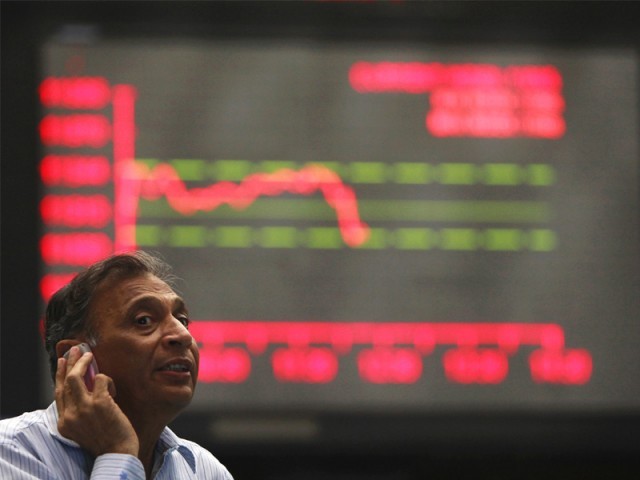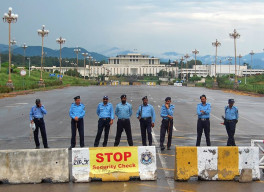
The year 2016 promised much, but so far delivered little in return as the KSE-100 Index has shed 5.5% so far and February is yet to finish.
Pakistan’s equity market has been subject to a persistent pressure of foreign investment outflow amid a global selloff since the beginning of 2016, despite the January merger of three stock exchanges that was tipped to attract more foreign investment.
World Bank paints mixed picture of economy
Even though foreign investors are encouraged by Pakistan’s growth potential rooted in its young demographics and opportunities brought by the $46-billion China-Pakistan Economic Corridor (CPEC) projects, the frontier market still needs to address its structural and regulatory issues and improve national security to engage foreign interest while bracing a tumultuous global financial environment.
“2016 will be a difficult year,” said Nadeem Naqvi, managing director of the Pakistan Stock Exchange (PSX) Limited. “We’ve seen some foreign portfolio investment outflows primarily in the oil and gas sector which has a major impact on the index.”
Since New Year’s Day, foreign investors have net sold $82.4 million as of February 19 as the benchmark KSE-100 Index slid for four consecutive days last week, shedding 2.9%, and 6.7% year to date, defying the authorities’ effort to integrate the stock exchanges of Karachi, Lahore and Islamabad that came with a unsaid promise —inflow of investment.
The outflow came on the back of large sums of redemptions in mutual funds concerning a few heavily-weighted stocks including Oil and Gas Development Company Ltd. and MCB Bank Ltd, according to Beidi Gu, a portfolio manager at New York City-based Caravel Management LLC, which has $600 million under management, 40% of which is in frontier markets including Pakistan.
China leads FDI inflow in Pakistan
The stock exchange had 554 companies listed in 2015, and the market capitalisation was $66.5 billion last year. In comparison, the Bombay stock market in India was more than 20 times higher at $1.51 trillion.
About one third of free-float shares valued at $6 billion are held by foreign investors, mainly institutional players including Franklin Resources Inc., JPMorgan Chase & Co. and Goldman Sachs Group Inc.
US investment accounts for more than 50% of the foreign portfolio, according to Mohammed Sohail, CEO of Topline Securities that handles 20% of the market’s foreign portfolio investments.
Foreign portfolio investment pulled back $315.2 million in 2015 after two years of more than $380 million injection. The stock index, comprising 100 common stocks picked on the basis of companies’ market capitalisation and business sectors, rose at an annual average of 18% in the past 10 years.
Not looking at a repeat of an average annual index growth of 20% in the last ten years, Naqvi said he “will be happy to see a 12 to 15% annual return at the end of 2016.”
Pakistan receives $119.3 million in FDI, higher by 7.5%
Others echo the view
“This is a tough and negative environment for frontier markets like Pakistan,” said Win Thin, senior vice president and global head of Emerging Market Strategy at Brown Brothers Harriman in New York. “Global growth has slowed, US dollar is stronger and interest rates are up, commodity prices have crashed — a lot of factors that have contributed to the market boom in the last 10 years have faded away.”
Frontier markets in developing countries, with smaller market capitalisation and less liquidity than emerging markets including China and India, attract investors with relatively high tolerance to volatility to pursue high returns.
Frontier markets funds have been grappling with negative returns this year. Templeton Frontier Markets Fund, with a $23-million stake in Pakistan’s market at the end of 2015, had a negative year-to-date return of 6.3% and a negative one-year return of 26.5% on February 18.
Despite headwinds confronting frontier markets, the PSX is looking to a June decision of New York City-based equity indices provider MSCI Inc — whether to be included in MSCI Emerging Markets Index, according to Naqvi.
“We’ve seen historically that whenever a market gets included in the emerging market universe there would be a significant inflow of big funds and repositions of portfolio,” Naqvi said. “In a small market like Pakistan, even if $200 or $300 million comes in, the indices will go up substantially.”
World Bank report warns Pakistan of ‘substantial’ fiscal risks
Pakistan’s currency has performed relatively stable over the past two years despite the US dollar’s appreciation against other currencies. Pakistani rupee stood at 104.8 a dollar on February 19, little changed from February 2014. Meanwhile the Bloomberg Dollar Spot Index, which measure’s the greenback’s performance among 10 peers, has risen nearly 20%.
Foreign investors look to the potential for consumption growth in the world’s sixth most populous country. More than 60% of 181.2 million Pakistanis in 2013 were under 25 years old, according to Pakistan Bureau of Statistics and the World Bank.
The CPEC is expected to boost capital raising of companies supporting a slew of infrastructure and energy upgrading projects. Naqvi said he foresees at least $2 to $3 billion raised in the power sector in fiscal 2017.

“In the next 24 months, people will see the reality, not just talk, as CPEC projects get implemented,” Naqvi said. “A lot of ancillary industries will be needed to support these projects. Almost all cement companies have announced doubling their capacity.”
Despite record-low oil prices hovering around $30 a barrel that is beneficial for a net oil importer, investors are concerned that Pakistan could get too comfortable to conduct tax and business reforms necessary for long-term growth.
Tax reforms needed
“The cyclical factor of oil price is almost a perfect scenario for Pakistan right now,” Gu of Caravel Management said. “Yet we have concerns that the government is not taking this window to reform its tax collection and energy policy including privatisation.”
Pakistan's current tax regime favours elite, says tax reforms report
Pakistan has one of the worst tax collection records in the world. The country’s tax to GDP ratio was only 9.5% in 2015, compared to the average of 34.4% in 2014 for 34 advanced and emerging countries in the Organization for Economic Cooperation and Development.
Terrorist attacks in the country still unnerve foreign investors despite the authorities’ continuous efforts to wipe out terrorism. Only faring better than Iraq, Afghanistan and Nigeria, Pakistan suffered the brunt of the fourth deadliest impact of terrorism out of more than 160 countries in 2015, according to a Global Terrorism Index report by the Institute for Economics and Peace.
“Security issues have been a major hurdle historically and remains one of the biggest concerns of foreign investors,” Sohail of Topline Securities said. “But the situation has been improving.”
The Karachi-based market’s small size and lack of liquidity renders it vulnerable to manipulation despite attractive price-earnings ratios. Less than two-fifths of all shares were listed on the market in 2015.
“The main concern of foreign investors is about the market’s liquidity,” Naqvi said. “We are working on the implementation of requiring all companies listed to maintain a minimum 25 percent of free-float shares at all times.”
Fraudulent trading has also been a chronic malady for Pakistan’s equity market, which prompted the Securities and Exchange Commission of Pakistan to declare insider trading “an offence” and tighten securities regulations last year trying to regain the trust of investors.
The writer is a special correspondent
Published in The Express Tribune, February 22nd, 2016.
Like Business on Facebook, follow @TribuneBiz on Twitter to stay informed and join in the conversation.










1731929357-0/Express-Tribune-(6)1731929357-0-270x192.webp)






COMMENTS (9)
Comments are moderated and generally will be posted if they are on-topic and not abusive.
For more information, please see our Comments FAQ